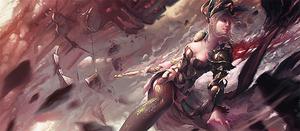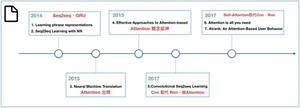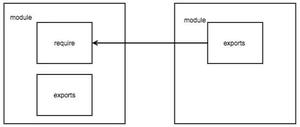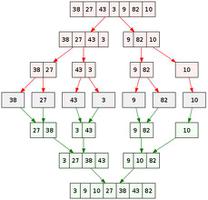在ggplot中绘制具有交互作用的混合效果模型
我有两个连续变量之间交互的lmer模型。效果包确实显示这种互动是抓好一个明确vairable的效果一起:在ggplot中绘制具有交互作用的混合效果模型
但我想要绘制与随机效应ggplot并根据栖息地类型分组这种相互作用。我已经作出了尝试,但留下了一个非常混乱的图表是:
dataframe1$fit<-predict(SR14.1) p<-ggplot(dataframe1,aes(interaction(standmoisture, standTemp), `Species Richness`, group = fhabitat, col=Area, shape=fhabitat)) +
geom_line(aes(y=fit2), size=0.8) +
geom_point() +
theme_classic()
p+theme(legend.position = "bottom") +ylab(
expression(bold("Species Richness")))
任何帮助,将不胜感激。这里是我的数据:
structure(list(`Species Richness` = c(1, 2, 2, 2, 5, 4, 3, 7, 4, 4, 5, 5, 3, 3, 3, 2, 6, 5, 8, 6, 7, 5, 5, 6, 7, 7, 7, 6, 5,
7, 8, 4), standTemp = structure(c(0.720812577321754, 1.41490248010771,
0.0146933080454731, 2.0380887793892, 1.28080253427975, -0.339111964680604,
-0.186933532099618, -1.04644870942643, 1.00134901679053, 0.629436912210655,
1.30527718827517, 1.23329420029196, -0.70224836547858, -0.298343821795056,
0.644926209311894, 0.361500234717626, -1.70378944519547, -0.238189024325525,
0.394362033579524, 0.42276111901573, 0.585447308443146, 0.637435021986569,
-0.00641281497429604, 0.513464320459941, -1.03017086629094, -0.334335315786658,
-1.88419125458547, -0.401319485159916, -1.59260510821939, -1.06216330539459,
-1.27891208032179, -1.09337815049224), .Dim = c(32L, 1L), "`scaled:center`" = 28.7021556522675, "`scaled:scale`" = 0.893068155224622),
standmoisture = structure(c(0.249478032878488, -1.17491997943563,
0.0549893575950258, -1.58242006098193, -1.46943140200773,
2.16472841614611, 1.64979649491942, 1.65535331421323, -1.00821540062123,
0.405068973105258, -0.228408426389447, -0.280272073131704,
0.923705440527824, 1.0403986456979, 1.36639871093494, 1.32564870278031,
-0.182101598941004, -0.252487976662638, -0.815578998435709,
-0.72481761663676, -1.7528291859922, -0.582192588095555,
-0.272862980739953, -0.0728174861626776, 0.0753643616723412,
-0.0468856627915491, -0.41363573618322, -0.546999399234737,
-0.196919783724506, 0.890364524764945, 0.840353151120626,
-1.03785177018824), .Dim = c(32L, 1L), "`scaled:center`" = 0.16413125, "`scaled:scale`" = 0.0539877192576716),
fhabitat = structure(c(1L, 1L, 1L, 1L, 1L, 1L, 1L, 1L, 1L,
1L, 1L, 1L, 1L, 1L, 1L, 1L, 2L, 2L, 2L, 2L, 2L, 2L, 2L, 2L,
2L, 2L, 2L, 2L, 2L, 2L, 2L, 2L), .Label = c("Flatwood", "Sandhill"
), class = "factor"), fblock = structure(c(1L, 1L, 1L, 1L,
1L, 2L, 2L, 2L, 3L, 4L, 4L, 4L, 5L, 5L, 6L, 6L, 7L, 7L, 7L,
7L, 8L, 8L, 8L, 8L, 8L, 9L, 9L, 9L, 10L, 10L, 10L, 11L), .Label = c("1",
"2", "3", "4", "5", "6", "7", "8", "9", "10", "11"), class = "factor")), .Names = c("Species Richness",
"standTemp", "standmoisture", "fhabitat", "fblock"), row.names = c(NA,
-32L), class = c("tbl_df", "tbl", "data.frame"))
,这里是我使用的模型:
SR14.1<-lmer(`Species Richness`~fhabitat + standmoisture * standTemp +(1|fblock), data = dataframe1) 编辑**更好地阐明我的意思。我已显示之间的相互作用的另一种混合效应模型的图像一个分类变量和一个连续变量。在这个情节我已经绘制的随机效应(1个| fblock)与多元回归线,我想能够连续两个变量
回答:
我不完全之间与交互做到这一点清楚你在找什么?这是否接近?
df %>% mutate(fct = cut(standTemp, breaks = 5)) %>%
ggplot(aes(x = standmoisture, y = `Species Richness`, col = fhabitat)) +
geom_point() +
facet_wrap(~fct) +
geom_smooth(method = "lm")
以上是 在ggplot中绘制具有交互作用的混合效果模型 的全部内容, 来源链接: utcz.com/qa/258134.html







